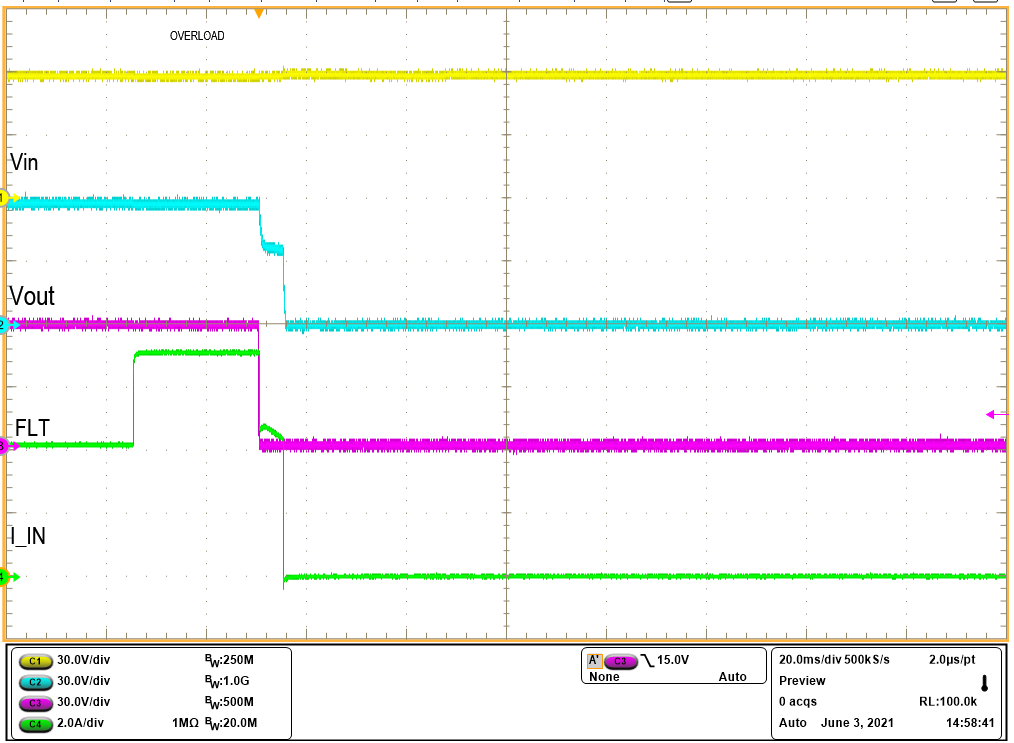SLVUCA4 August 2021 TPS1653
3.4.3 Current Limit Test with Step Load of 4 A to 7 A
Use the following instructions to perform current limit test:
- Set the current limit to 4.5 A by installing the J4/J11 jumper in position 1-2.
- Set the load resistance to 96 Ω ±1 Ω and the power supply voltage to 58 V.
- Enable the load and the power supply.
- Decrease the load resistance to set load current of 4 A.
- Apply overload of 7 A and verify the device current limit behavior.
- The device allows the pulsed overload current of 7 A for a duration of 25 ms before limiting the current to 4.5 A. In this case, the device turns off the internal FET due to thermal shutdown before the expiry of tCL_ILIM(dly).
- Place the jumper J4 and J11 at other settings to test at various other current limits.
- Disable the power supply and the load.
Figure 3-2 shows current limit behavior for step load of 4 A to 7 A on the TPS1653EVM eFuse Evaluation Board.
 Figure 3-2 Over Current Response of TPS16530 for 4.5-A Current Limit Setting
Figure 3-2 Over Current Response of TPS16530 for 4.5-A Current Limit Setting